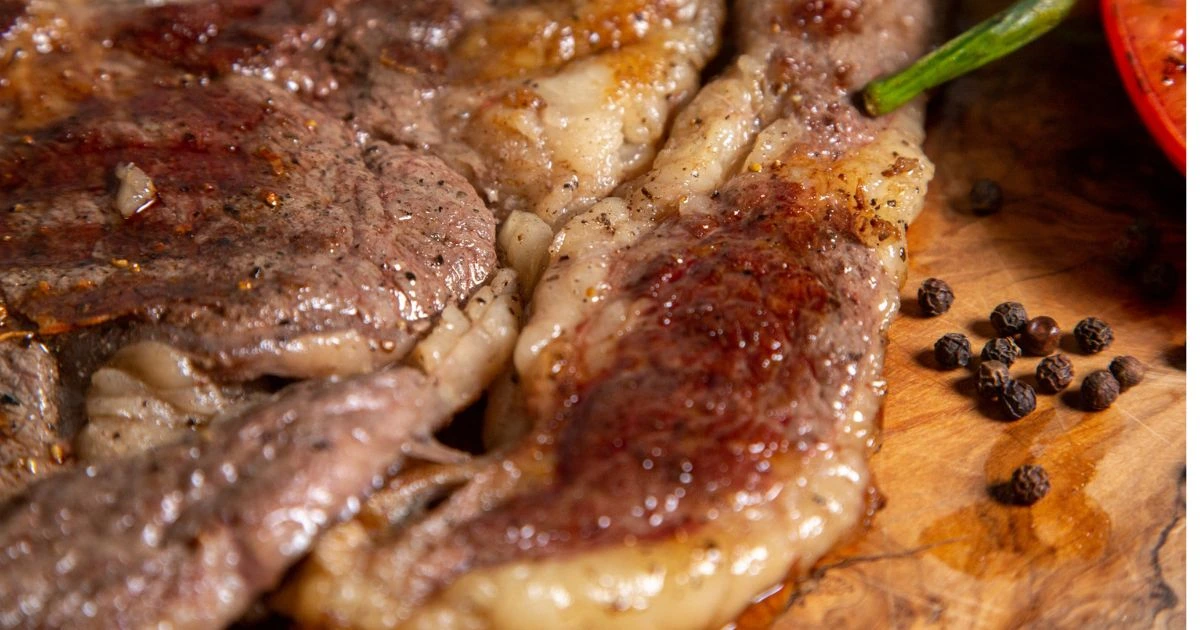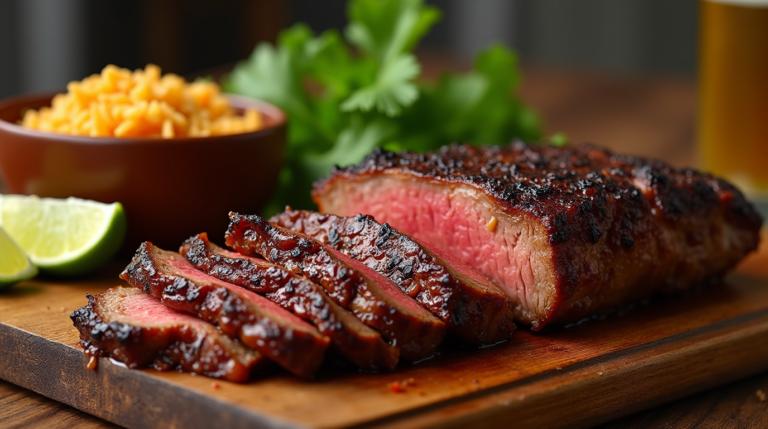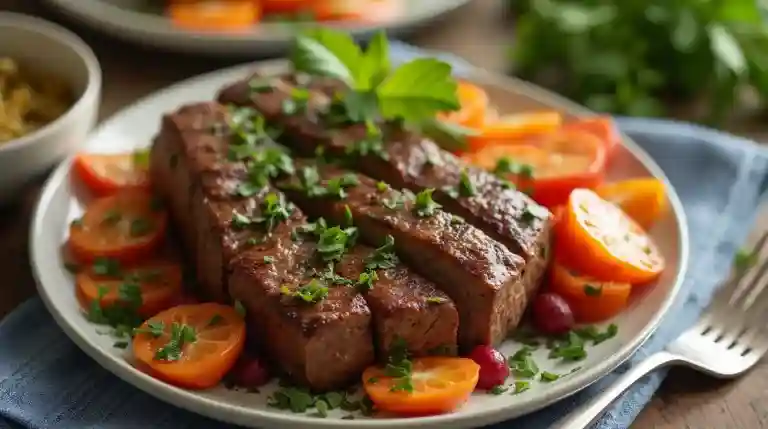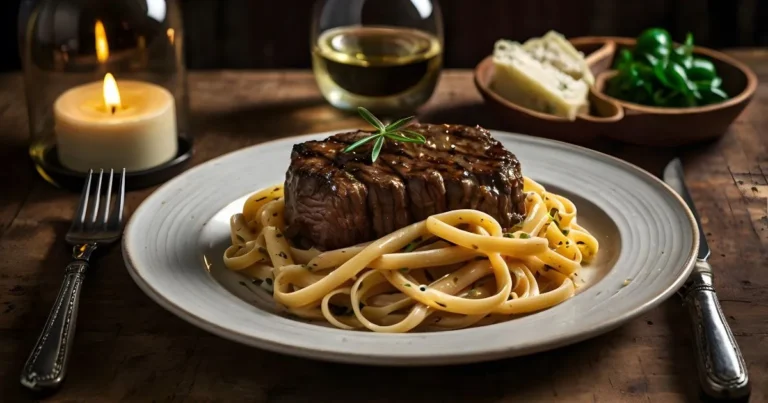Table of Contents
If you’re a steak lover, you’ve probably found yourself staring at the meat counter, wondering how to get the most bang for your buck. Beef chuck eye steak offers just that—a delicious, budget-friendly cut that rivals the best ribeye steaks in flavor and tenderness. Whether you’re new to cooking steaks or a seasoned pro, learning how to cook beef chuck eye steak to perfection is an essential skill. This guide will walk you through every step, from understanding the cut itself to seasoning and cooking it like a pro.
What is Beef Chuck Eye Steak?
Before diving into the preparation and cooking process, let’s take a moment to understand what beef chuck eye steak is and why it’s such a fantastic choice for your next steak dinner.
Understanding Beef Chuck Eye Steak
Beef chuck eye steak comes from the chuck primal section of the cow, right next to the rib section. It’s often referred to as the “poor man’s ribeye” because it shares many of the same qualities as the more expensive ribeye steak. This cut is known for its rich beefy flavor, generous marbling, and tender texture. While it may not carry the same reputation as ribeye or filet mignon, chuck eye steak delivers great flavor and is significantly more affordable.
Appearance and Texture
When you look at a beef chuck eye steak, you’ll notice the marbling throughout the meat—tiny streaks of fat running through the steak. This marbling is essential for flavor and juiciness, making the steak more tender when cooked properly. The texture of chuck eye steak is relatively tender compared to other cuts from the chuck primal, such as shoulder steak. While it’s still leaner than cuts like ribeye, it offers a balance of tenderness and flavor.
Why Choose Beef Chuck Eye Steak?
- Cost-Effective: Compared to ribeye or filet mignon, chuck eye steak offers a similar taste at a fraction of the price.
- Flavor: The rich marbling in chuck eye steak results in a savory, beefy flavor that satisfies any steak lover.
- Tenderness: Though slightly tougher than high-end cuts, chuck eye steak is still incredibly tender when cooked right.
- Versatility: You can cook chuck eye steak in several ways, from grilling to pan-searing, making it adaptable to your cooking style.
Why Beef Chuck Eye Steak is a Great Choice for Your Next Meal
Now that you know a bit about what beef chuck eye steak is, let’s explore why it should be your go-to choice when you’re craving a steak dinner.
Affordable Yet Flavorful
Beef chuck eye steak offers excellent flavor without the hefty price tag. While ribeye or New York strip steaks can easily cost $20 or more per pound, chuck eye steak can be found for much less, often under $10 per pound. This makes it an attractive option for families or anyone on a budget who still wants a top-quality steak dinner.
Perfect for Home Cooks
If you’re looking to impress guests or just enjoy a great meal at home, chuck eye steak is ideal. It’s easy to cook, requiring no special techniques or tools. Whether you prefer grilling, pan-searing, or roasting, this cut is flexible enough to accommodate all your cooking preferences.
Flavor Without the Fuss
Many steak cuts require complex seasoning or long marinating times to unlock their full potential. Chuck eye steak, on the other hand, doesn’t need much—just salt, pepper, and perhaps a little garlic and butter to enhance its natural flavors. This simplicity makes it a great option for those who want a flavorful steak without the fuss.
Preparing Your Beef Chuck Eye Steak
The key to a great steak lies in how you prepare it. Whether you’re starting with fresh or frozen beef chuck eye steak, follow these steps to ensure it’s ready for cooking.
Thawing the Steak
If you’re working with frozen beef chuck eye steaks, proper thawing is essential. The best method is to thaw the steak slowly in the refrigerator for 24 hours. This allows the meat to defrost evenly, ensuring a consistent cook. If you’re in a rush, you can use the cold-water method. Simply place the steak in a sealed plastic bag and submerge it in cold water for about 30-60 minutes.
Trimming the Fat
Although chuck eye steaks come with some fat marbling, you may notice a layer of fat along the edges. You can trim this fat if you prefer, but keep in mind that some fat contributes to the steak’s flavor and tenderness. If you like a bit of fat for flavor, leave it intact, but if you want to reduce the fat content, feel free to trim away any excess.
Drying the Steak
After thawing and trimming, it’s important to pat the steak dry with paper towels. Removing excess moisture from the surface will help achieve a better sear when you cook the steak. A dry surface allows the Maillard reaction (the process that browns the meat) to happen, which creates that beautiful, crispy crust we all love.
The Best Cooking Methods for Beef Chuck Eye Steak
Beef chuck eye steak is a versatile cut that can be cooked in several different ways. Whether you prefer the smoky flavor from grilling or the savory crust from pan-searing, each method brings out something unique in this cut of beef.
Pan-Seared Chuck Eye Steak
Pan-searing is one of the easiest and most effective ways to cook beef chuck eye steak. The key is to use a heavy-bottomed skillet or cast-iron pan, which retains heat well and helps create a crispy crust.
- Heat the Pan: Place your skillet on the stovetop and heat it over medium-high heat. Add 1-2 tablespoons of oil with a high smoke point, such as vegetable oil or canola oil.
- Season the Steak: Sprinkle both sides of the steak with salt and pepper. For added flavor, you can use garlic powder or onion powder.
- Sear the Steak: Place the steak in the hot pan and sear it for about 3-5 minutes per side, depending on the thickness of the steak and your desired level of doneness.
- Rest the Steak: Once the steak is cooked to your liking, transfer it to a cutting board and let it rest for 5-10 minutes. This allows the juices to redistribute and ensures a tender, juicy bite.
Grilled Chuck Eye Steak
Grilling chuck eye steak is a fantastic way to add a smoky flavor while keeping the meat juicy. The high heat of the grill gives the steak a beautiful char and a slightly smoky aroma.
- Preheat the Grill: Heat your grill to medium-high heat. Clean and oil the grates to prevent the steak from sticking.
- Season the Steak: As with pan-searing, season the steak with salt and pepper, or marinate it for a few hours if you prefer extra flavor.
- Grill the Steak: Place the steak on the grill and cook for 4-5 minutes per side, depending on the thickness of the meat. For crosshatch grill marks, rotate the steak 90 degrees halfway through each side.
- Rest and Serve: Remove the steak from the grill, let it rest for a few minutes, and then slice it against the grain for optimal tenderness.
Oven-Roasted Chuck Eye Steak
For a more hands-off approach, oven-roasting is a great option. It’s ideal if you’re cooking thicker cuts of beef chuck eye steak and want to ensure an even cook.
- Preheat the Oven: Preheat your oven to 400°F (200°C).
- Sear the Steak: Heat a skillet on the stovetop over medium-high heat. Sear the steak for 2-3 minutes on each side to create a brown crust.
- Transfer to the Oven: After searing, transfer the skillet to the preheated oven and roast for 6-8 minutes for medium-rare. Adjust the time based on your desired doneness.
- Rest the Steak: Once done, remove the steak from the oven and let it rest for 5-10 minutes before slicing.
How to Season Beef Chuck Eye Steak
The seasoning you use can elevate the flavor of your chuck eye steak without overwhelming its natural taste. Here are a few options:
Simple Salt and Pepper
Sometimes, simplicity is best. A generous seasoning of salt and pepper is all you need to enhance the natural beefiness of the chuck eye steak. The salt draws out moisture and helps the meat retain its flavor while the pepper adds a subtle spice.
Garlic and Herb Seasoning
If you want to add a bit more depth to the flavor, try seasoning the steak with garlic powder, onion powder, and fresh or dried herbs like rosemary, thyme, or oregano. These flavors pair wonderfully with beef and bring a touch of sophistication to your dish.
Marinades
For even more flavor, consider marinating your beef chuck eye steak for a few hours before cooking. A simple marinade of soy sauce, olive oil, garlic, and balsamic vinegar can work wonders, tenderizing the meat while adding complexity to its flavor.
Tips for Achieving Perfectly Cooked Beef Chuck Eye Steak
- Use a Meat Thermometer: To ensure your steak is cooked to your preferred doneness, use a meat thermometer. Aim for 130°F (54°C) for medium-rare and 140°F (60°C) for medium.
- Rest Your Steak: After cooking, always allow your steak to rest for at least 5 minutes. This helps the juices redistribute, resulting in a juicier steak.
- Don’t Overcrowd the Pan: If you’re cooking multiple steaks, cook them one or two at a time to avoid overcrowding the pan, which can lead to steaming rather than searing.
- Butter Finish: For an extra touch of luxury, finish your steak with a pat of butter, adding a rich and flavorful finish just before serving.
Conclusion
Cooking beef chuck eye steak is an easy and satisfying way to enjoy a flavorful, tender steak without spending a fortune. Whether you choose to pan-sear, grill, or roast your steak, you can rest assured that you’ll enjoy a delicious meal with just a few simple steps. Don’t forget to experiment with seasonings and marinades to create your perfect flavor profile. Now that you know how to cook beef chuck eye steak, it’s time to fire up your stove or grill and enjoy a steak that’s as good as any high-end cut.
FAQs
Q1: Can I cook beef chuck eye steak well-done?
Yes, but it’s important not to overcook it. Chuck eye steak is best enjoyed medium-rare to medium for optimal tenderness.
Q2: How do I know when my steak is done?
Use a meat thermometer to ensure the steak reaches your desired level of doneness. Medium-rare is around 130°F (54°C), while medium is around 140°F (60°C).
Q3: What’s the best way to season beef chuck eye steak?
Simple salt and pepper are enough for many, but garlic, herbs, or marinades can elevate the flavor.
Q4: How should I rest my steak after cooking?
Rest your steak for at least 5-10 minutes to allow the juices to redistribute, ensuring a juicy and tender bite.
Ready to try cooking your own beef chuck eye steak? Whether you’re grilling, searing, or roasting, this affordable and flavorful cut is sure to become a staple in your kitchen. Don’t wait—grab a chuck eye steak from your local butcher, follow these simple steps, and impress yourself (and your guests) with a perfectly cooked steak.
Have questions, tips, or a favorite recipe to share? Drop a comment below and let us know how you like to prepare your chuck eye steak! Happy cooking!




[…] you ever picked up a beautifully marbled chuck steak, only to worry it might turn out tough and chewy? You’re not alone. Many cooks shy away from […]